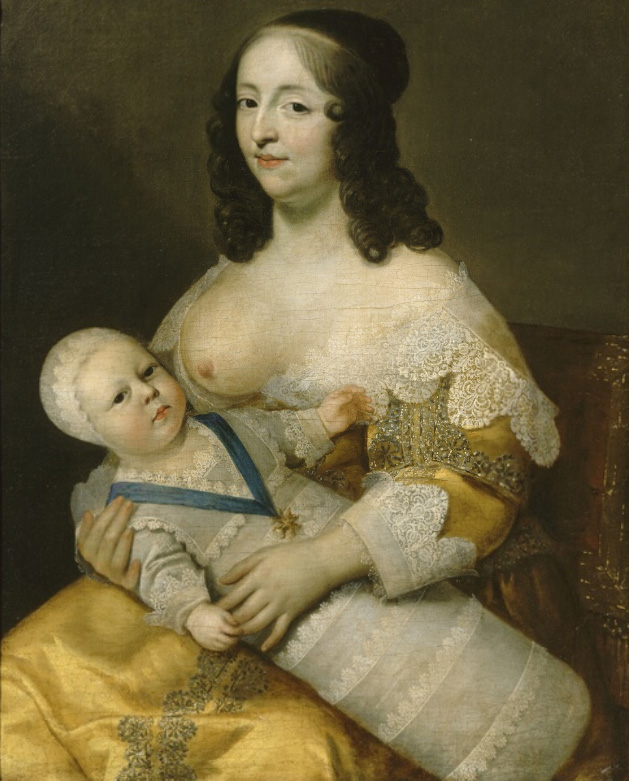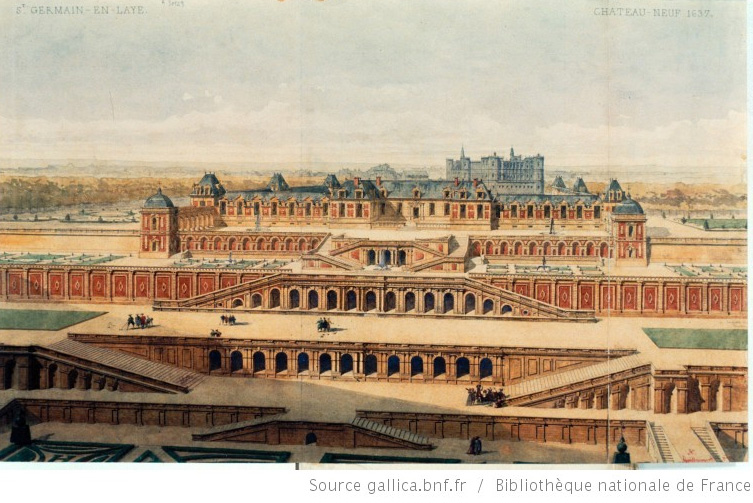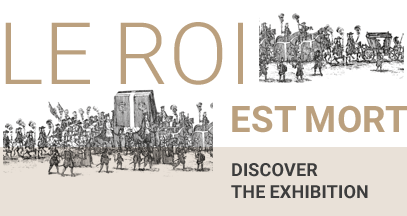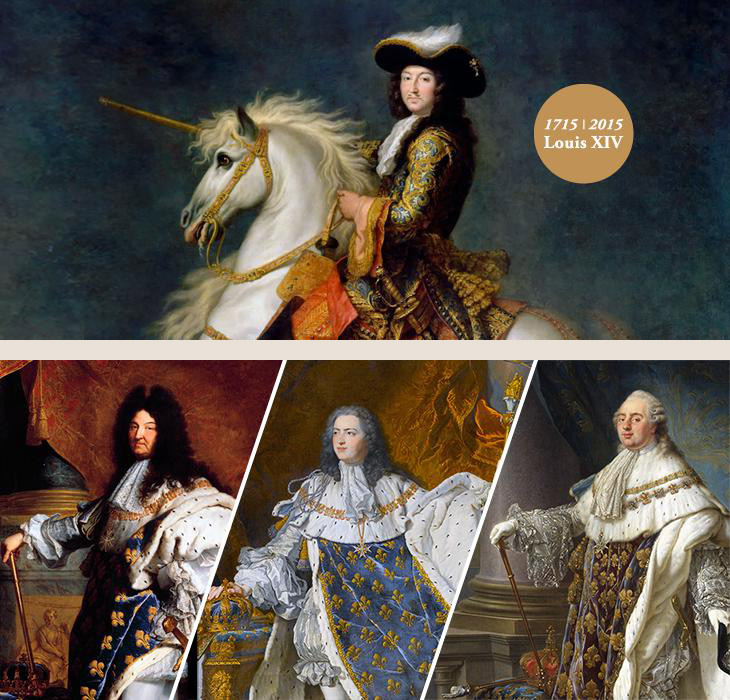The birth of Louis XIV
By Étienne Faisant
On 5 September 1638, Anne of Austria gave birth to her first child at 11 o’clock in the morning in the Château-Neuf in Saint-Germain-en-Laye. As is customary, the Princes and High Officers of the Crown were present and ascertained that the new-born baby held by midwife Dame Péronne was a boy. News was taken to Louis XIII who has been feeling weak after a recent fever and had left to eat. He has just arrived and fell to his knees to thank God for giving him his long-hoped-for heir.
 Since the pregnancy was announced, countless public prayers have been offered up as the people waited impatiently for the royal couple to give France its Dauphin, heir to the throne, finally after twenty-three years of marriage and several miscarriages. The birth of the child, known as Louis-Dieudonné (Louis the God-Given), is already considered by some to be a miracle. Many see it as proof that the Heavens support the policy conducted by the King and his main minister, Cardinal Richelieu. At least it rules out the risk of seeing Louis XIII succeeded by his weak brother Gaston Duke of Orleans.
Since the pregnancy was announced, countless public prayers have been offered up as the people waited impatiently for the royal couple to give France its Dauphin, heir to the throne, finally after twenty-three years of marriage and several miscarriages. The birth of the child, known as Louis-Dieudonné (Louis the God-Given), is already considered by some to be a miracle. Many see it as proof that the Heavens support the policy conducted by the King and his main minister, Cardinal Richelieu. At least it rules out the risk of seeing Louis XIII succeeded by his weak brother Gaston Duke of Orleans.
Riders have set out for Paris to spread the good news. As they were prevented from crossing the Seine via the bridge in Neuilly, which is damaged, they transmitted their message to relays positioned on the other bank of the river by waving their hats in the air. When they saw the happy signal that a boy had been born, rather than crossed arms to announce the birth of a girl, they galloped off towards Paris where three days of festivities are already planned.
By Étienne Faisant, Doctor in History of Art, specialised in architecture and its décors at the end of the Middle Ages and in modern times. A post-doctoral student at the "Pasts in the Present" research centre working on the digitisation project for the château, gardens and museum of Saint-Germain-en-Laye. He recently published an article on the first works conducted by Catherine de’ Medici in the gardens of Chenonceaux.
The Château of Saint-Germain-en-Laye has been home since 1862 to one of Europe’s largest archaeological museums, the National Museum of Archaeology in the national estates of Saint-Germain-en-Laye, which presents archaeological collections from the Palaeolithic era through to the Middle Ages.






















